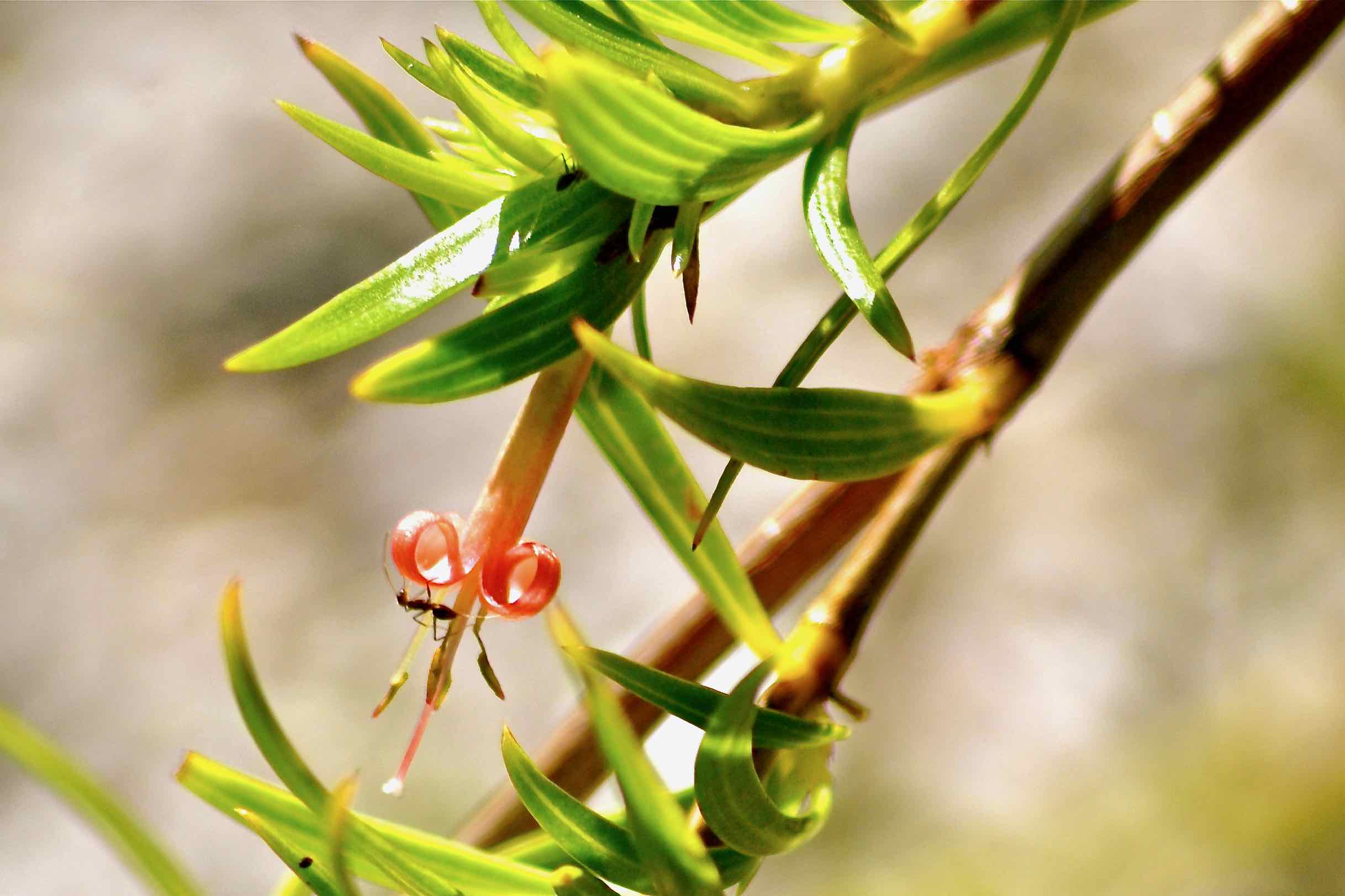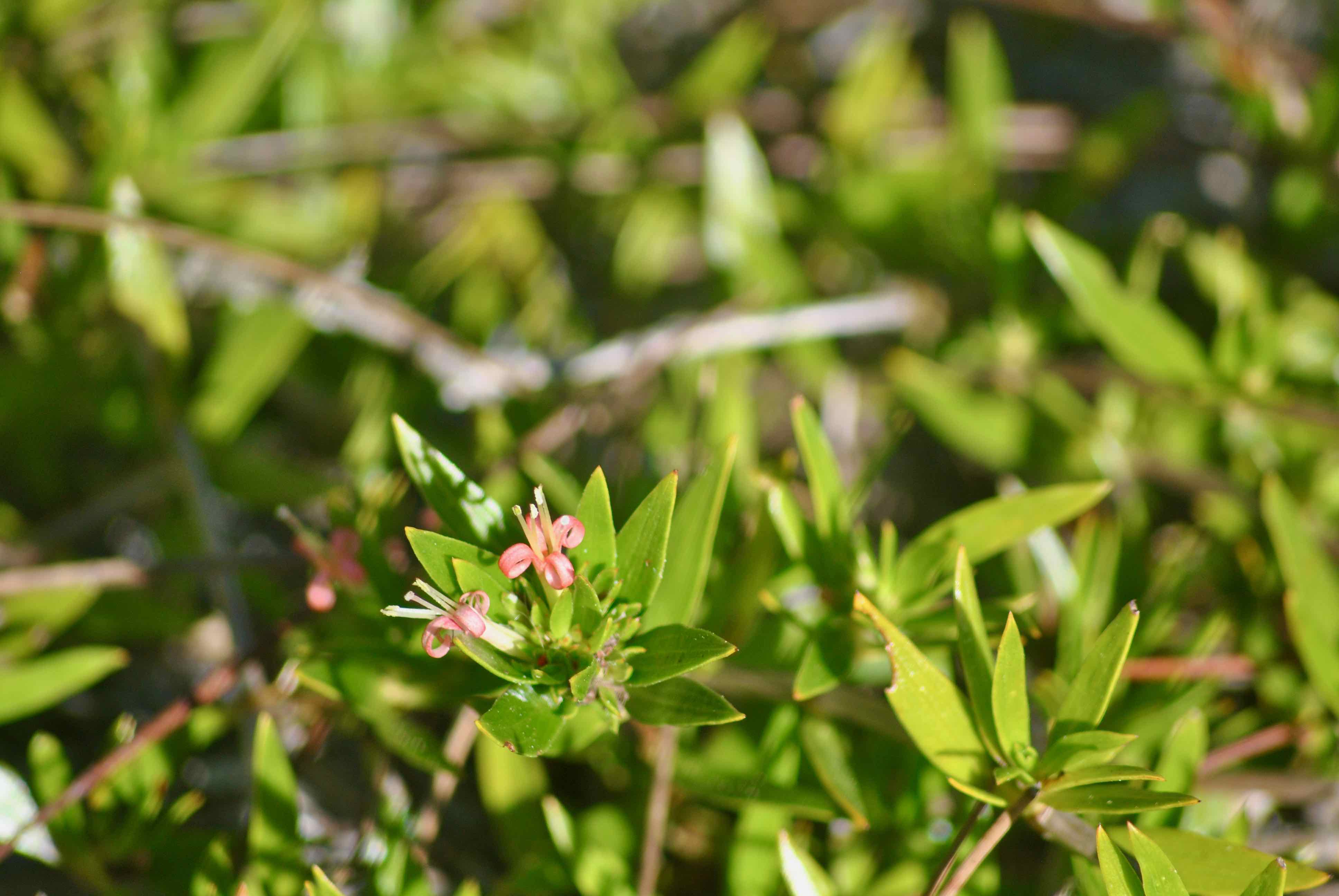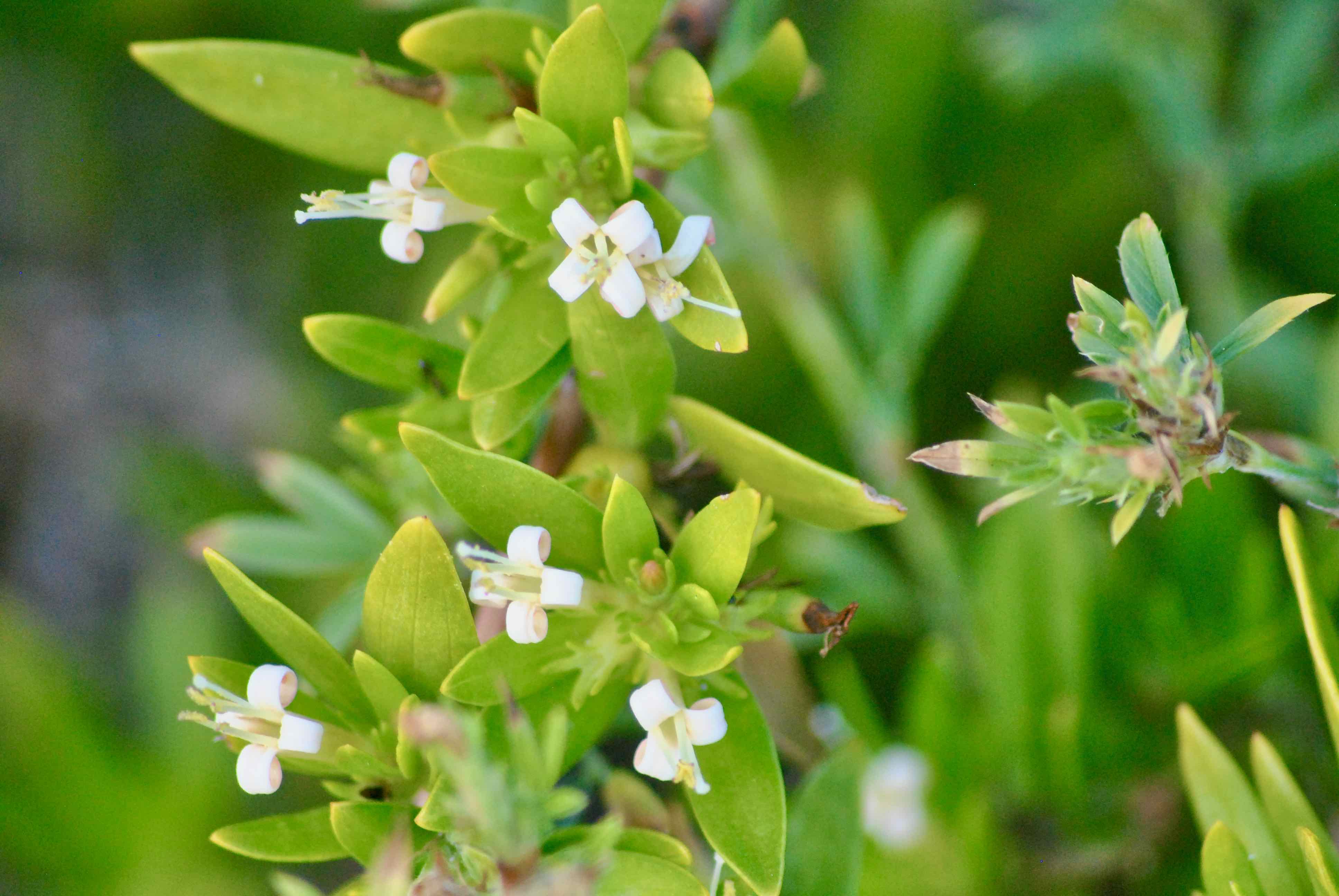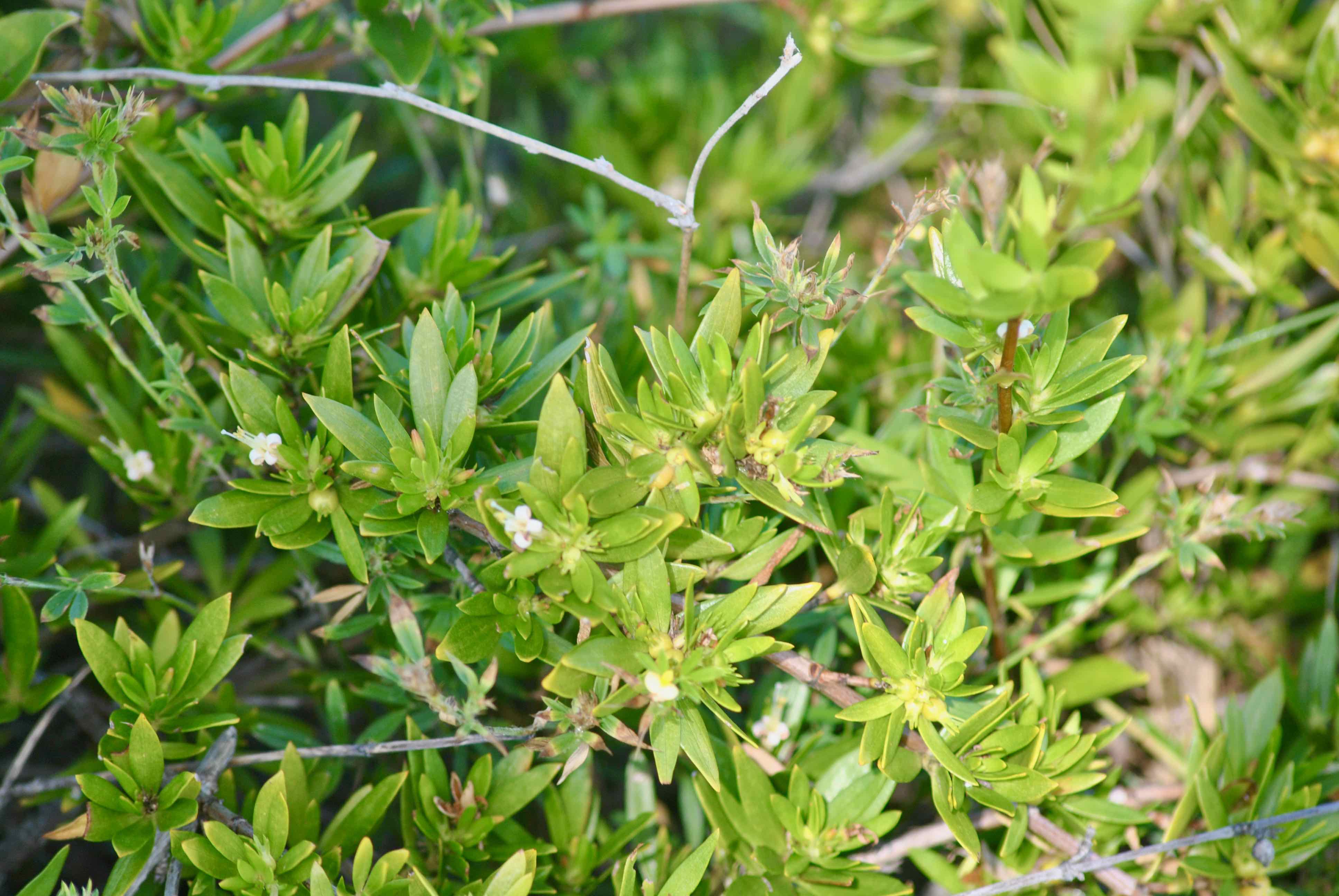
Beach-creeper, photographed at National Key Deer Refuge, Big Pine Key, Monroe County, in December 2013.
From the first moment we saw them, the flowers on beach-creeper, Ernodea littoralis, reminded us of those little Christmas tree lights. The kind before LEDs began to take over the market. Perhaps it was because that first moment was during the Christmas season.
They're short, tube-shaped about the same size as those lights, with a base that looks like the socket and stamen that look like the filiment. Without the glass, of course. On the other hand, beach-creeper flowers with their curled petals also look a little like bananas half way peeled. lt's an unusual-looking bloom for sure, distinctive really, with its various pinks and whites. See these flowers in a coastal habitat and you know instantly what plant you're looking at. For us amateur naturalists, they have an added bonus: the flowers appear throughout the year, though peaking in winter-spring.
Beach-creeper is a Florida native, in fact it's found only in Florida among the 50 states, from Volusia County south to the Keys and back north around Tampa Bay, forming a giant horseshoe, if you will. It's also found in the Caribbean, Mexico, Central America and northern parts of South America.
The plant itself is a low-lying shrub, creeping along the ground on beach ridges and in coastal pinelands. Where the stem touches the ground, the plant sends out roots. Beach-creeper might reach three feet tall, but it's spread can be twice that. Littoralis by the way, means "of the beach." The leaves are glossy, narrow, less than two inches long, and appear in clusters at the end of stems. The flowers are small, about a half-inch long, and , appear year round. They give way to a golden-yellow berry that holds one or two seeds.
In the Turks and Caicos, the leafy branch tips of beach-creeper are used to make a cough-relieving tea. In Belize, beach-creeper is a source of food. But it's primary use today is in landscaping. It's creeping habit and its root system help stabilize dunes and sandy soil. Beach-creeper is both drought and salt tolerant, ideal for coastal restorations, rock gardens and other uses. It's generally grown from cuttings and it's available from several commercial nurseries. It takes full sun.
Beach-creeper fruit is a source of food for birds but its flowers attract several butterfly species and hummingbirds.
Beach-creeper is a member of the coffee family, Rubiaceae, and has a rare, similarly looking cousin, E. cokeri, found in the Everglades. Other common names and spellings include common ernodea, coughbush, cough bush, golden-creeper and beach creeper.
National Key Deer Refuge



